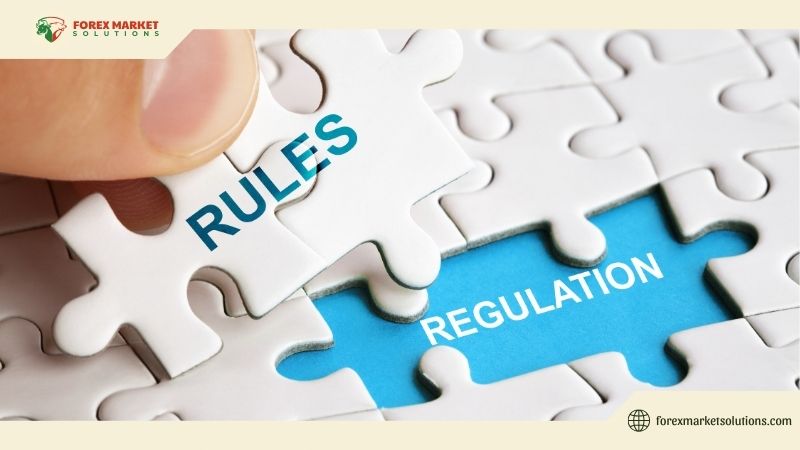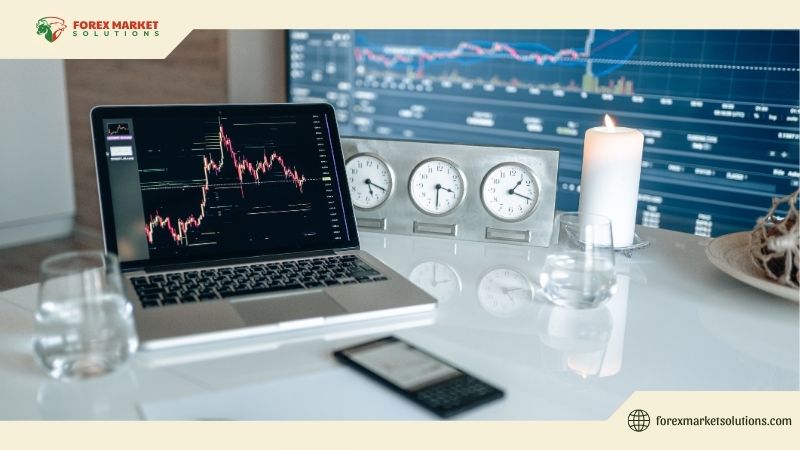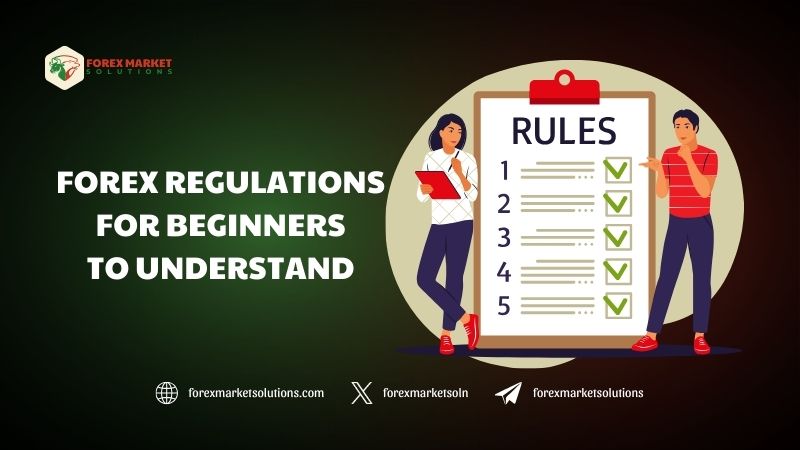Forex trading opens up a world of financial opportunity, but for newcomers, the maze of rules governing the market can feel daunting. Grasping Forex regulations for beginners to understand is a vital step toward trading with confidence and security. As of March 16, 2025, these regulations shape how the Forex market operates globally, protecting traders while ensuring fair practices. In this guide, we’ll break down Forex regulations for beginners to understand in a clear, approachable way, covering why they matter, who enforces them, and how they impact your trading journey.

Why Forex Regulations for Beginners to Understand Are Crucial
The Forex market is the largest financial market in the world, with trillions of dollars exchanged daily across borders. Its sheer size and accessibility make it attractive, but they also create risks like fraud and manipulation. For someone just starting out, knowing Forex regulations for beginners to understand provides a safety net, ensuring your funds are secure and your broker operates legitimately. These rules aren’t just technical jargon—they’re the backbone of a trustworthy trading environment.
This article will simplify the regulatory landscape, focusing on what beginners need to know to get started. From the role of oversight bodies to the practical effects on your trades, we’ll unpack Forex regulations for beginners to understand so you can focus on learning the market without worrying about hidden pitfalls.
The Basics of Forex Regulations
At its core, Forex regulation is about creating order in a decentralized market. Unlike stock exchanges with a central hub, Forex trading happens over-the-counter, meaning deals are struck directly between parties worldwide. This structure makes oversight essential to prevent scams and ensure transparency. For beginners, Forex regulations for beginners to understand mean knowing that someone’s watching out for you—agencies that set standards for brokers and enforce rules to keep the market fair.
These regulations vary by country, but they share common goals: protecting traders, maintaining market integrity, and promoting stability. As a new trader, you don’t need to memorize every detail, but a basic understanding of how these rules work will help you choose a broker and trade with peace of mind. Let’s dive into the key players and principles behind Forex regulations for beginners to understand.

Who Enforces Forex Regulations for Beginners to Understand?
In every major trading hub, government or independent bodies oversee Forex activities. In the United States, the Commodity Futures Trading Commission (CFTC) takes the lead, working alongside the National Futures Association (NFA), a self-regulatory group. Together, they ensure brokers meet strict financial and ethical standards. If you’re trading from the U.S., these names are your first clue that a broker is legitimate—part of Forex regulations for beginners to understand.
Across the Atlantic, the European Union relies on the European Securities and Markets Authority (ESMA) to harmonize rules across member states. In the UK, the Financial Conduct Authority (FCA) sets a high bar for broker conduct. Australia’s Australian Securities and Investments Commission (ASIC) is another respected regulator, known for its rigorous oversight. Each of these bodies tailors regulations to their region, but they all aim to shield traders like you from risks. Knowing these names simplifies Forex regulations for beginners to understand, giving you a starting point to check a broker’s credentials.
Key Aspects of Forex Regulations for Beginners to Understand
One of the first things regulated brokers must do is register with their local authority. This isn’t just paperwork—it’s a commitment to follow rules like keeping enough capital on hand to cover client trades. For example, U.S. brokers need at least $20 million in net capital, a hefty requirement that weeds out fly-by-night operations. This financial cushion means your money isn’t at risk if the broker hits hard times, a practical piece of Forex regulations for beginners to understand.
Another key rule is fund segregation. Regulated brokers must keep your money separate from their own, storing it in dedicated client accounts. If the broker goes bankrupt, your funds stay safe, ready to be returned to you. This protection is a cornerstone of Forex regulations for beginners to understand, offering reassurance as you deposit your hard-earned cash.
Leverage limits are also common. In the U.S., you can’t use more than 50:1 leverage on major currency pairs, meaning for every $1 you put in, you can control $50 in trades. Europe caps it at 30:1, while some unregulated offshore brokers dangle 500:1 or higher. These caps might feel restrictive, but they’re there to stop you from taking on too much risk before you’re ready—another way Forex regulations for beginners to understand keep you on solid ground.
Transparency rules round out the basics. Brokers must disclose risks, fees, and performance data clearly, so you know what you’re getting into. No hidden costs or vague promises—just the facts. This openness is a big part of Forex regulations for beginners to understand, helping you make informed choices without wading through fine print.
How Regulations Shape Your Trading Experience
For a beginner, these rules have a direct impact on how you trade. Take leverage limits: with a $1,000 account in the U.S., you can control up to $50,000 in trades, but not more. This keeps your potential losses manageable while you learn the ropes. In contrast, an unregulated broker might let you leverage 1000:1, turning a small market dip into a total wipeout. Understanding Forex regulations for beginners to understand means seeing how these guardrails protect you as you build skills.
Broker reliability is another perk. A regulated firm like Forex.com or OANDA, backed by the CFTC and NFA, has to meet high standards, reducing the chance of scams. You won’t wake up to find your account emptied by a shady operator—a risk some face with unregulated platforms. This reliability ties into Forex regulations for beginners to understand, giving you a stable base to start trading.
On the flip side, regulations can limit flexibility. U.S. rules ban hedging—holding opposing positions on the same pair—which some traders use to manage risk. The “First In, First Out” (FIFO) rule also forces you to close trades in the order they were opened. These quirks might feel restrictive, but they’re designed to keep things straightforward, aligning with Forex regulations for beginners to understand by reducing complexity.

Choosing a Regulated Broker
Picking a broker is your first big decision, and regulations guide the way. Start by checking if they’re registered with a reputable body—look for CFTC/NFA in the U.S., FCA in the UK, or ASIC in Australia. Most brokers display this info on their websites, but you can double-check on the regulator’s official site. This step is a practical application of Forex regulations for beginners to understand, ensuring you’re with a trusted partner.
Look at their trading conditions, too. Tight spreads and low fees matter, but so does a platform that’s easy to use—MetaTrader 4 is a popular choice for its simplicity. Demo accounts are a bonus, letting you practice without risk. A broker that ticks these boxes while following Forex regulations for beginners to understand sets you up for a smooth start.
Global Variations in Forex Regulations
Not all countries regulate Forex the same way. The U.S. is strict, with its high capital requirements and leverage caps, while Europe strikes a balance, allowing hedging but still protecting traders. Offshore hubs like the Cayman Islands or Vanuatu offer lax rules, attracting brokers with high leverage and low oversight. For beginners, sticking to regulated markets like the U.S. or UK is safer—part of Forex regulations for beginners to understand—even if it means fewer bells and whistles.
Staying Safe in the Forex Market
Regulations don’t eliminate all risks, but they tilt the odds in your favor. Avoid brokers promising “guaranteed profits” or pushing you to deposit more than you can afford—red flags that dodge Forex regulations for beginners to understand. Stick to your budget, start small, and use demo accounts to test the waters. These habits, backed by regulatory protections, keep you secure as you learn.

The Future of Forex Regulations
As of March 16, 2025, Forex regulations continue to evolve. Cybersecurity is a growing focus, with agencies like the CFTC tightening rules to protect against data breaches. Interest in crypto-Forex pairs is also prompting regulators to clarify how these fit into existing frameworks. For beginners, staying aware of these shifts ensures you’re trading under the latest version of Forex regulations for beginners to understand.
Getting a handle on Forex regulations for beginners to understand is your ticket to a safer, smarter trading experience. These rules—from fund protection to leverage limits—exist to guide you through the market’s complexities, letting you focus on strategy rather than survival. As you embark on your Forex journey in 2025, let this knowledge be your foundation for success.
Ready to learn more about trading and regulations? Visit Forex Market Solutions for expert insights, tips, and updates on Forex regulations for beginners to understand. Follow our website today and kickstart your trading adventure with confidence!
